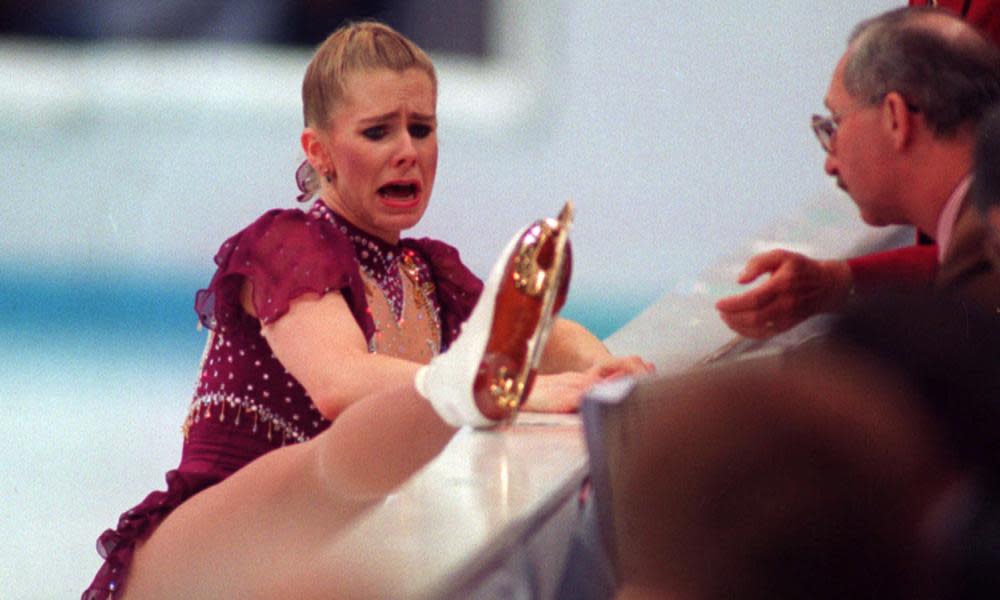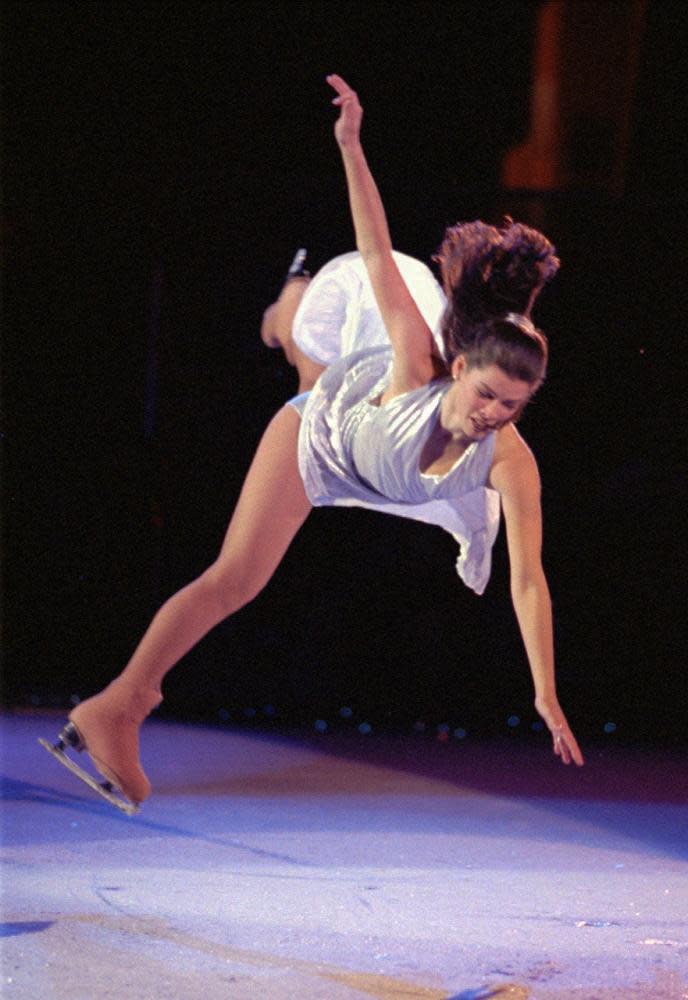I, Tonya strips away the rhinestones but fails the real victim of Harding’s story

As we were reminded by the events in the Michigan courtroom over which Judge Rosemarie Aquilina presided last week, rhinestones and makeup are sometimes the camouflage hiding lives damaged by callous exploitation. The courage of the young women who stood up to speak of the sexual abuse committed by Larry Nassar during his time as the US gymnastics team doctor was particularly inspiring since it came from athletes whom we are accustomed to applauding, once every four years, in their guise as beaming infant-sprites, defying gravity and the restrictions of human physiology as they launch themselves around the Olympic arena in a blizzard of stag leaps and triple back saltos.
The last occasion on which rhinestones and makeup and an Olympic sport featured in a courtroom amid such headlines followed the brutal attack in January 1994 on the American figure skater Nancy Kerrigan, when an assailant came out of the shadows of the Cobo Arena in Detroit after a practice session during the US national championships. Blows from a telescopic truncheon were aimed at a knee in what was immediately interpreted as an attempt to prevent her competing in that year’s Winter Olympics in Lillehammer, then seven weeks away.
On the ice, figure skaters – like gymnasts – are paragons of extreme athleticism, with a little extra helping of sweet-toothed kitsch. The maiming of Kerrigan was like an axe-murderer suddenly appearing in a Barbara Cartland novel, all the more shocking when its immediate aftermath – the skater screaming: “Why? Why” as she lay clutching her badly bruised knee – was caught by the television cameras. It would be hard to identify a more brutal example of the use of illegal methods, not only to reduce a competitor’s effectiveness – like doping a horse or juicing a boxer’s gloves – but to cheat an athlete out of the right to compete altogether.
Subsequent criminal proceedings identified the people behind the plot against Kerrigan as the friends of Tonya Harding, her great US rival, who went on to win the national title in Detroit. The plan failed, in as much as Kerrigan recovered in time to join the team in Lillehammer in late February, narrowly missing the gold medal. Harding finished eighth after a drama with a broken lace on the ice led to a plea to the judges for her to be allowed to restart the routine.
Harding’s ex-husband, Jeff Gillooly, eventually went on trial, along with her bodyguard, Shawn Eckhardt, and the man said to have carried out the assault on Kerrigan, Shane Stant. All three, plus a getaway driver, served prison terms but Harding was given only probation, a community service order and a $100,000 fine after pleading guilty to obstructing justice by failing to tell the police what she knew of the plot. Later she was banned for life by the governing body of US skating, which meant that, at 23, her life as a competitor was over.
The maiming of Kerrigan was like an axe-murderer suddenly appearing in a Barbara Cartland novel
Her contention that she was not an active accomplice has been undermined by scepticism through the 24 years since the incident took place but her claims will inevitably be reinforced in the public mind by I, Tonya, a feature film starring Margot Robbie as Harding, to be released in the UK in the middle of February.
The director, Craig Gillespie, lets himself off the hook by announcing at the start that the film “is based on irony-free, wilfully contradictory, totally true interviews with Tonya Harding and Jeff Gillooly”. The audience understands that this is going to be a partial version of the story and probably also one in which fidelity to the historical truth comes second to the values of entertainment.
If even half of what we learn about Harding’s background from the film is true – and her mother insists that most of it isn’t – then a measure of sympathy is certainly justified. She was brought up in relative poverty by a father who taught her to shoot rabbits and a mother who fed her skating ambitions but abused her mentally and physically, and taught her from the start to treat rivals as enemies. She became the first American female skater to land a triple axel (and even now only seven other women in the world have done that) but a lack of refinement and a brusque manner tended to alienate judges in a sport that still assesses artistry as well as technical merit.

Horrific and funny, sometimes both at the same time, the film invites us to laugh at characters dredged up from the sump of what we now think of as Donald Trump’s America, the people the 45th president meant when he said: “I love the poorly educated.” Among them would be Harding’s acid-tongued mother, LaVona Golden, chain-smoking herself all the way to emphysema, and the delusional Eckhardt, a fat boy living at home with his mum while believing himself to be at the centre of an international counterespionage web. The director finds a way of giving us evidence that actors so brilliantly portraying those two characters, Allison Janney and Paul Walter Hauser, are by no means guilty of indulging in caricature.
But in its desire to give Harding her say, and for all Robbie’s valiant efforts to dial down her famous beauty, little that the film proposes can be taken at face value. In the end the whole project seems monstrously unfair to Kerrigan, to whom only the most fleeting references are made. I, Tonya strips away the rhinestones and makeup but wants to leave us wondering about the identity of the real victim when, just as much as in Judge Aquilina’s courtroom, there is really no doubt at all.

 Yahoo Movies
Yahoo Movies 
